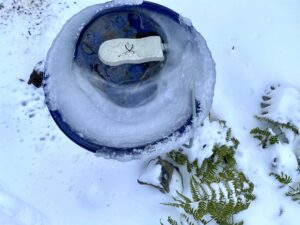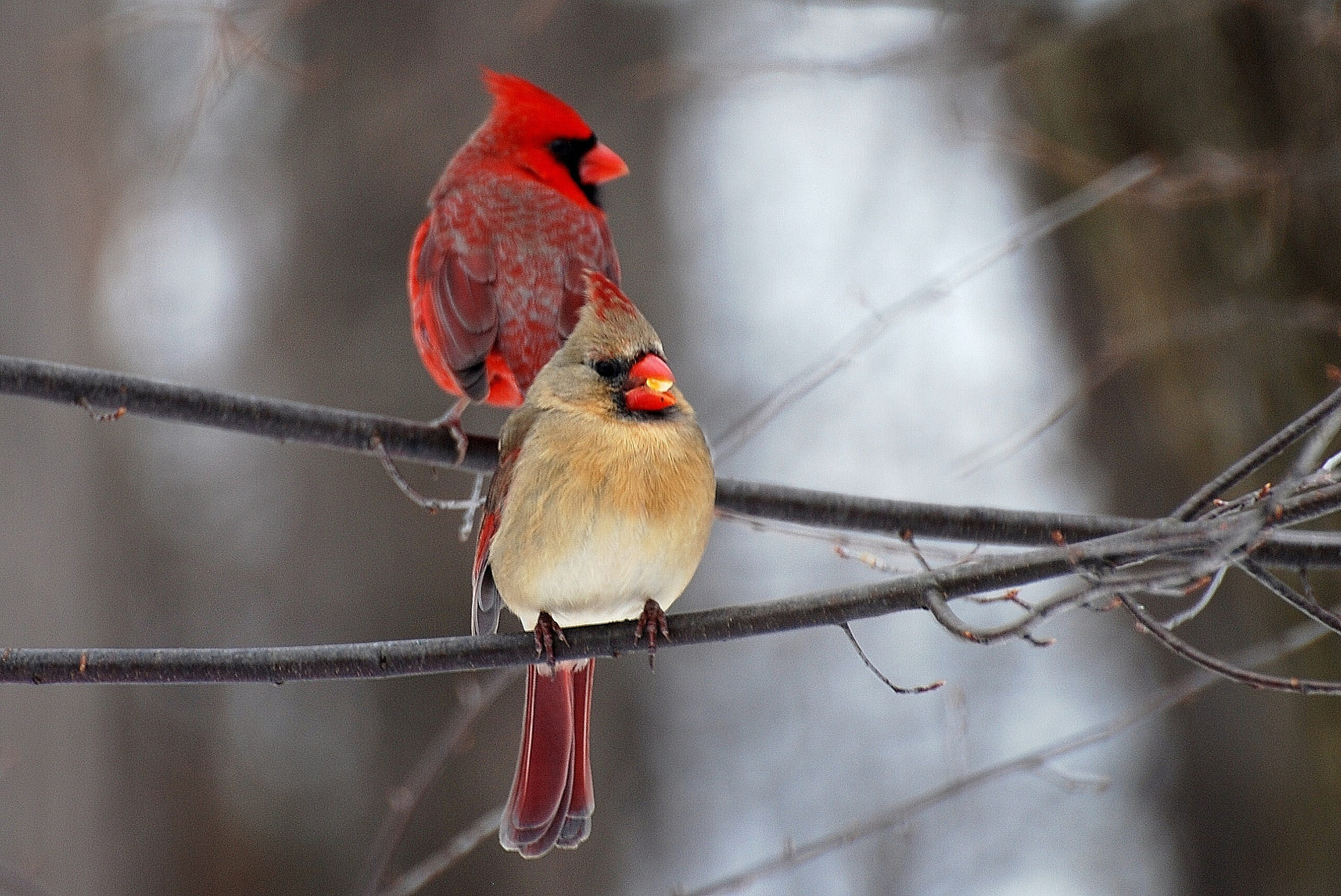How Birds Stay Warm in the Winter and How to Help
by Christy Rybka
Although most birds migrate south for the winter, many birds do not. Some birds, such as cardinals, sparrows, chickadees, and many others stay in their home habitats throughout the winter. In order to survive the freezing weather, these birds use several strategies to keep themselves warm, including:
Feathers
Feathers provide much needed insulation for birds in the winter. Many birds grow extra feathers in the late summer and fall to provide extra insulation in the cold winter weather!
Fat Reserves
Like many woodland creatures, one of the ways that birds prepare for winter is by building up fat reserves. By eating the abundance of food that is available in the late summer and fall, birds can fatten their bodies, providing extra insulation.
Metabolism
Many birds stay warm in the winter by slowing their metabolism. This enables the birds to conserve energy and minimize heat loss.
Blood Flow
Birds can monitor the temperature of their legs and feet separately from the rest of their bodies by controlling the flow of their blood! By directing more blood to their legs and feet, which are protected by special scales that minimize heat loss, birds can maintain high body temperatures throughout the winter and minimize the risk of frostbite.
Fluffing
Another way that birds stay warm in the winter is by fluffing their feathers. Fluffing creates air pockets around their bodies, providing extra insulation to keep birds warm throughout the winter.
Tucking
Although their legs and feet are protected by special scales that minimize heat loss, birds can also keep their legs and feet warm by tucking their legs and feet under their feathers.
Roosting
Many birds stay warm by gathering in large flocks and cuddling close together. Sharing body heat minimizes heat loss and helps birds keep each other warm throughout the winter.
Shivering
Like humans, birds can shiver to stay warm during the long, cold winters. Shivering increases metabolism and generates more body heat.
Although there are many ways that birds can keep themselves warm during the cold winter months, maintaining high body temperatures in the cold weather is not easy! Fortunately, there are several ways that we can help:
Feeders
One of the best and most common ways to help birds survive the cold weather is by keeping bird feeders in your yard. If you have a bird feeder, be sure to keep it stocked with nutritious food, such as suet and peanuts in addition to regular seed.
If you have a bird feeder, be sure to keep it clear of snow for easy access.
Water

Finding liquid water sources can be very difficult for birds during the winter months. In addition to a bird feeder, keeping a heated bird bath in your yard can help birds find liquid water, which they need to stay alive in the cold winter weather.
Shelter
Creating brush piles can help birds by providing shelter which helps them stay warm during the cold winter months. If you can, be sure to build your brush pile in a place that will not be blown away by the wind!
Winter is a great time to observe birds out your window or outside on a nature hike. Next time you look up in the trees or out in your backyard, pay attention to what birds you see! If you look closely, you might see some birds fluffing, tucking, roosting, or using other strategies to keep themselves warm.

